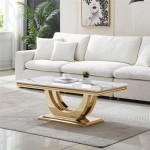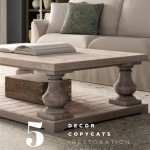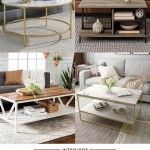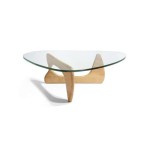The Allure of Live Edge Coffee Tables and End Tables
Live edge furniture, particularly coffee tables and end tables, has experienced a surge in popularity in recent years. This trend reflects a broader appreciation for natural materials, unique design, and the incorporation of organic elements into interior spaces. Live edge pieces stand apart from traditionally manufactured furniture due to their preservation of the wood's natural contours, showcasing the inherent beauty and character of the tree from which they originate.
The term "live edge" refers to the edge of a wood slab that retains the tree's natural bark or outer shape, rather than being cut into a perfectly straight line. This allows the natural curves, knots, and imperfections of the wood to become a focal point of the furniture's design. Each live edge piece is inherently unique, guaranteeing that no two tables are exactly alike. This individuality contributes significantly to the appeal and value of live edge furniture.
While aesthetics are a primary driver of the popularity of live edge coffee tables and end tables, their construction and selection process are equally crucial to understanding their value and longevity. The choice of wood species, the drying and curing process, and the craftsmanship involved in creating the final piece all contribute to the table's durability and overall quality.
Wood Species and Their Characteristics
The selection of wood species plays a pivotal role in the appearance, durability, and overall character of a live edge coffee table or end table. Different wood species possess unique grain patterns, color variations, and hardness ratings, influencing their suitability for specific applications and aesthetic preferences.
Hardwoods, such as walnut, maple, oak, and cherry, are generally preferred for live edge furniture due to their strength, durability, and attractive grain patterns. Walnut is prized for its rich, dark brown color and distinctive grain variations, offering a sophisticated and elegant aesthetic. Maple, on the other hand, is known for its lighter color and tight grain, providing a clean and contemporary look. Oak is a classic choice, recognized for its strength, durability, and distinctive grain patterns, while cherry offers a warm, reddish-brown hue and a smooth, even texture.
Softwoods, such as pine, fir, and cedar, are less commonly used for live edge coffee tables and end tables due to their lower density and susceptibility to dents and scratches. However, they can be suitable for certain applications where a more rustic or weathered aesthetic is desired. Softwoods are also typically more affordable than hardwoods, making them an attractive option for budget-conscious consumers.
Beyond the species, the specific cut of the wood also affects its appearance. Slab cuts, where the tree trunk is cut into wide, flat pieces, are commonly used to create live edge tables. The grain patterns visible in the slab depend on how the tree was cut (e.g., plain sawn, quarter sawn, rift sawn), each offering a distinct look.
Drying and Curing Processes
After the wood is harvested and cut into slabs, the drying and curing process is critical to prevent warping, cracking, and other forms of damage. This process reduces the moisture content of the wood to a stable level, ensuring its long-term stability and durability.
Kiln drying is the most common method used to dry wood for furniture making. In this process, the wood is placed in a controlled environment where temperature and humidity are carefully regulated. Kiln drying accelerates the drying process and reduces the risk of defects compared to air drying. A well-kiln-dried slab will have a consistent moisture content throughout, minimizing the likelihood of future movement or cracking.
Air drying is a more traditional method that involves stacking the wood outdoors and allowing it to dry naturally over time. This process can take several months or even years, depending on the species and thickness of the wood. Air drying is generally considered to be gentler than kiln drying, but it is also more susceptible to variations in temperature and humidity, which can lead to defects.
Regardless of the drying method used, proper curing is essential to ensure the long-term stability of the wood. Curing involves allowing the wood to acclimate to its surrounding environment after drying. This process allows the wood to adjust to changes in temperature and humidity, minimizing the risk of warping or cracking.
Craftsmanship and Design Considerations
The craftsmanship involved in creating a live edge coffee table or end table significantly impacts its aesthetic appeal and structural integrity. The skill and attention to detail of the artisan determine the final quality and value of the piece.
The selection and shaping of the live edge are crucial steps in the process. The artisan must carefully evaluate the slab, identifying the most attractive and structurally sound sections to use for the tabletop. The live edge is then carefully shaped and sanded to enhance its natural beauty while maintaining its integrity. This process often involves removing loose bark, filling cracks or voids with epoxy resin, and smoothing any rough edges.
The design of the table base is equally important. The base must be strong and stable enough to support the weight of the tabletop while complementing its aesthetic. Common base materials include steel, wood, and cast iron. Steel bases are often chosen for their modern and minimalist aesthetic, while wood bases can provide a warmer and more traditional look. Cast iron bases offer a robust and industrial aesthetic.
Epoxy resin is frequently used in live edge furniture to fill voids, stabilize cracks, and create decorative accents. The resin can be tinted with various colors or pigments to create unique visual effects. When properly applied, epoxy resin can enhance the beauty and durability of the wood while preserving its natural character.
Finishing the table is the final step in the process. A variety of finishes can be used to protect the wood and enhance its natural beauty. Oil-based finishes penetrate the wood and provide a durable and water-resistant surface. Polyurethane finishes create a hard, protective coating that is resistant to scratches and stains. Varnish finishes offer a high-gloss sheen and excellent durability. The choice of finish depends on the desired aesthetic and the intended use of the table.
The placement of live edge coffee tables and end tables impacts the feel of a given space. A live edge coffee table might serve as the centerpiece of a living room, drawing attention to its natural form. Live edge end tables can flank a sofa or chair, providing a surface for lamps, books, or other accessories. When selecting these pieces, it's essential to consider the size and scale of the room, as well as the existing furniture and décor.
The long-term maintenance of live edge furniture includes regular dusting and cleaning with a soft cloth. Avoid using harsh chemicals or abrasive cleaners, as they can damage the finish. Periodic application of furniture polish or oil can help to maintain the wood's natural luster and protect it from drying out. Extreme changes in humidity and temperature can also damage the wood, so it’s important to control the environment as much as possible. With proper care and maintenance, a live edge coffee table or end table can provide years of enjoyment and become a cherished heirloom.

Wood Slab Coffee Table Live Edge Rustic Modern Hairpin Legs End Mid Century

Dark Wood Coffee Table Live Edge Unique Slab Round Side End Modern

Walnut Live Edge Coffee Table Furniture And Things

Teak Wood Live Edge Coffee Table For Living Room And Terrace

Live Edge Coffee Table Round Wooden Slab Wood Modern Rustic End Tables

Live Edge Walnut Coffee Table Set Individual Tables Available Rustic Side Boho Wood End

30 Live Edge Coffee Tables That Transform The Living Room Decoist

Sputnik Table Live Edge Round Side

If 2690e Live Edge End Table Hudsons Of Stratford Ltd

30 Live Edge Coffee Tables That Transform The Living Room Decoist







